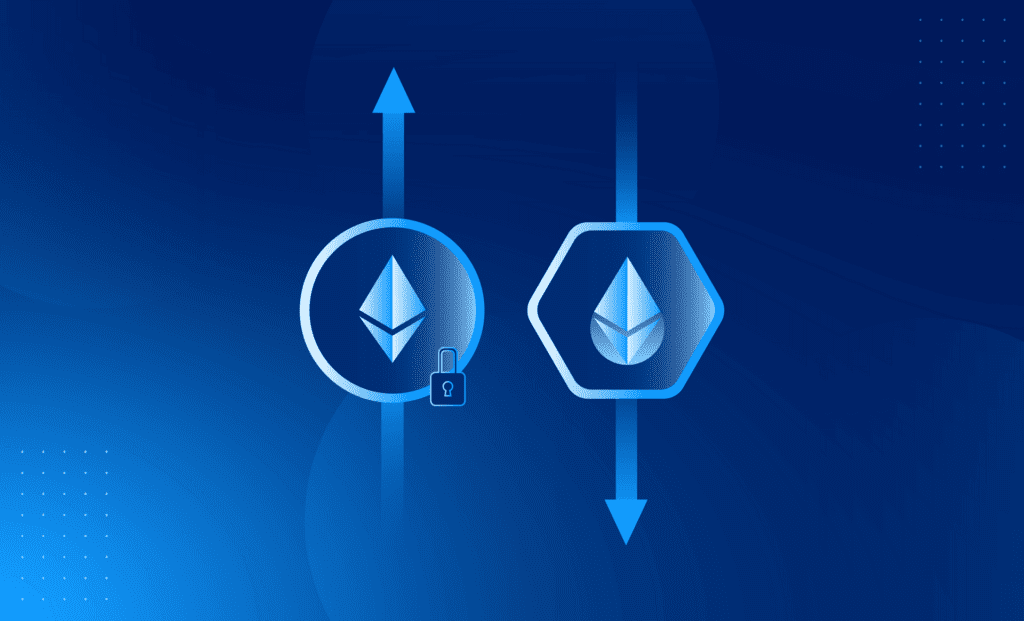Key Points:
- LSDFi, born from Ethereum’s upgrades, merges staking and DeFi, removing barriers, enhancing profits, and boosting network security.
- Its ecosystem encompasses providers, stablecoins, indexes, yields, and markets, offering new ways to engage with staked assets.
- LSDFi redefines DeFi by fusing staking and DeFi, unlocking the potential of digital assets for a more accessible, profitable, and secure future.
LSD Finance, or LSDFi, is a new story in the crypto industry that has received a lot of attention. What exactly is LSDFi? What are the prospects for the LSDFi environment in the future? Let’s find out with Coincu through this article.
What is LSDFi?
Known as LSDFi, or Liquid Staking Derivatives Finance, this innovative approach harnesses the power of the LSD (Liquid Staking Derivatives) platform and its associated tokens to unlock new possibilities for users in the DeFi space.
At its core, it revolves around leveraging the potential of the LSD platform, which is underpinned by the concept of liquid staking. This concept stems from the idea that locked assets can still retain their value and utility within the DeFi ecosystem. Central to understanding LSDFi is grasping the fundamentals of LSD and its pivotal components, namely LSD and LST (Liquid Staking Token).

The LSD Platform serves as the foundation upon which the LSDFi protocols are built. When assets are deposited onto the platform for liquid staking, users are issued LST tokens in return, equivalent to the assets they commit.
For instance, staking 1 ETH within Lido’s liquid staking mechanism yields 1 stETH, representing the corresponding LST. These LST tokens fuel the innovative applications within the LSDFi domain, enabling diverse financial activities within DeFi.
The ecosystem thrives on the adaptability of LST tokens like stETH. These tokens are a versatile tool for myriad financial functions within DeFi, ranging from decentralized exchanges (DEXs) to lending platforms and even more complex projects.
Through this approach, it not only empowers users to maximize the utility of their LSD assets but also contributes to bolstering liquidity, optimizing capital efficiency, and generating profits within the broader DeFi ecosystem.
For Ethereum validators, the role of LSD cannot be overstated. In the pre-Shapella upgrade era, validators encountered challenges withdrawing their locked ETH from the network. The introduction of LSD protocols, such as Lido Finance, RocketPool, and Frax, marked a significant turning point.

These protocols provided a solution by allowing validators to stake their ETH through them, consequently earning LST (Liquid Staking Token). This innovative mechanism not only enhances profitability for ETH stakers but also ensures their continued participation as validators.
The successful implementation of the Shapella upgrade in April 2023 brought about a transformative change. Validators’ concerns regarding the withdrawal of their ETH were finally addressed, offering them the freedom they had long sought.
Concurrently, users of LSD protocols gained the ability to convert LSTs back into ETH at a 1:1 ratio seamlessly. This newfound fluidity has turned staking into an appealing opportunity for ETH enthusiasts and speculators.

This favorable landscape has spurred the emergence of a multitude of LSD protocols, each offering enticing incentives to attract users to stake their ETH on their respective platforms. As the LSD phenomenon gains traction, a complementary sub-sector of DeFi has emerged in its wake—LSDFi. This evolution capitalizes on the LSD trend by enhancing utility and presenting new avenues for lucrative opportunities among LSD holders.
The development of LSDFi
LSDFi originated from The Merge and Shapella
The catalyst for the surge in interest in LSDFi can be traced back to two pivotal upgrades within the Ethereum network: The Merge and Shapella. The successful implementation of The Merge brought about a transition from Proof of Work (PoW) to Proof of Stake (PoS), prompting a significant rise in the number of Ethereum holders engaging in staking activities.
This surge in staking demand paved the way for the emergence of LSD protocols, which harness the potential of staked assets for a variety of financial endeavors within the DeFi ecosystem.
The subsequent Shapella upgrade brought further transformation, allowing users to withdraw their previously staked ETH. This development opened the door for a broader spectrum of retail investors to participate in staking activities as barriers related to locked funds were dismantled.

Ethereum’s network has historically posed obstacles for potential node operators due to prerequisites such as substantial ETH stakes, specialized hardware, and infrastructure demands. The LSDFi framework was meticulously crafted to address these impediments from multiple angles:
- Minimizing Staking Barriers: LSDFi tackles the barriers to entry head-on, streamlining the staking process for a more diverse range of participants.
- Maximizing User Profit: One of LSDFi’s core objectives is to optimize profitability for users, empowering them to make the most of their staked assets.
- Enhancing Network Security: LSDFi understands the critical link between network security and the amount of ETH staked. As more ETH is staked through these protocols, the Ethereum network‘s security is strengthened.
Hence, the current iteration of LSD within the broader puzzle of the crypto ecosystem acts as a bridge, aptly addressing the market’s demands and requirements.
The ecosystem is growing stronger day by day
The LSDFi ecosystem, which is growing stronger day by day, comprises a diverse array of components, each playing a unique role in the expansion of DeFi possibilities:
- DeFi Liquid Staking Providers: These protocols offer staking services within the DeFi realm, allowing users to reclaim Liquid Staking Tokens (LSTs) and utilize them across various applications.
- CEX Liquid Staking Providers: Centralized exchanges (CEXs) also participate in LSDFi, extending staking services to their users.
- CDP Stablecoin Protocols: CDP protocols allow users to utilize LSD tokens as collateral for minting stablecoins, creating new avenues for liquidity and collateralized borrowing.
- Index LSD Initiatives: In this facet, users lock their tokens to access project-specific LSD tokens, optimizing returns and fostering asset accumulation.
- Yield Strategy Protocols: LSDFi encompasses protocols that empower users to amplify their asset yields through an array of strategic approaches.
- Money Market Platforms: Lending protocols within the LSDFi realm enable users to deploy LSD tokens as collateral, facilitating the borrowing of other tokens.
As the LSDFi ecosystem continues to flourish, it not only addresses the limitations of traditional staking but also forges new paths within DeFi. With each component enhancing accessibility, profitability, and security, LSDFi emerges as a pivotal force driving the evolution of decentralized finance. Through the fusion of staking and DeFi, LSDFi paints a transformative future for the crypto landscape, one that promises to rewrite the rules of engagement and amplify the potential of digital assets.
Conclusion
The LSDFi network is also designed to profit from platforms like Lido, whose use is expected to grow in the long term. Users of the LSDFi platform may earn extra interest on top of the interest earned via staking. For the user, this is the primary role of LSDFi applications. Finally, it has the potential to boost the value and usefulness of Ethereum as an interest-earning asset, bolstering its standing in the crypto ecosystem.
DISCLAIMER: The information on this website is provided as general market commentary and does not constitute investment advice. We encourage you to do your own research before investing.














